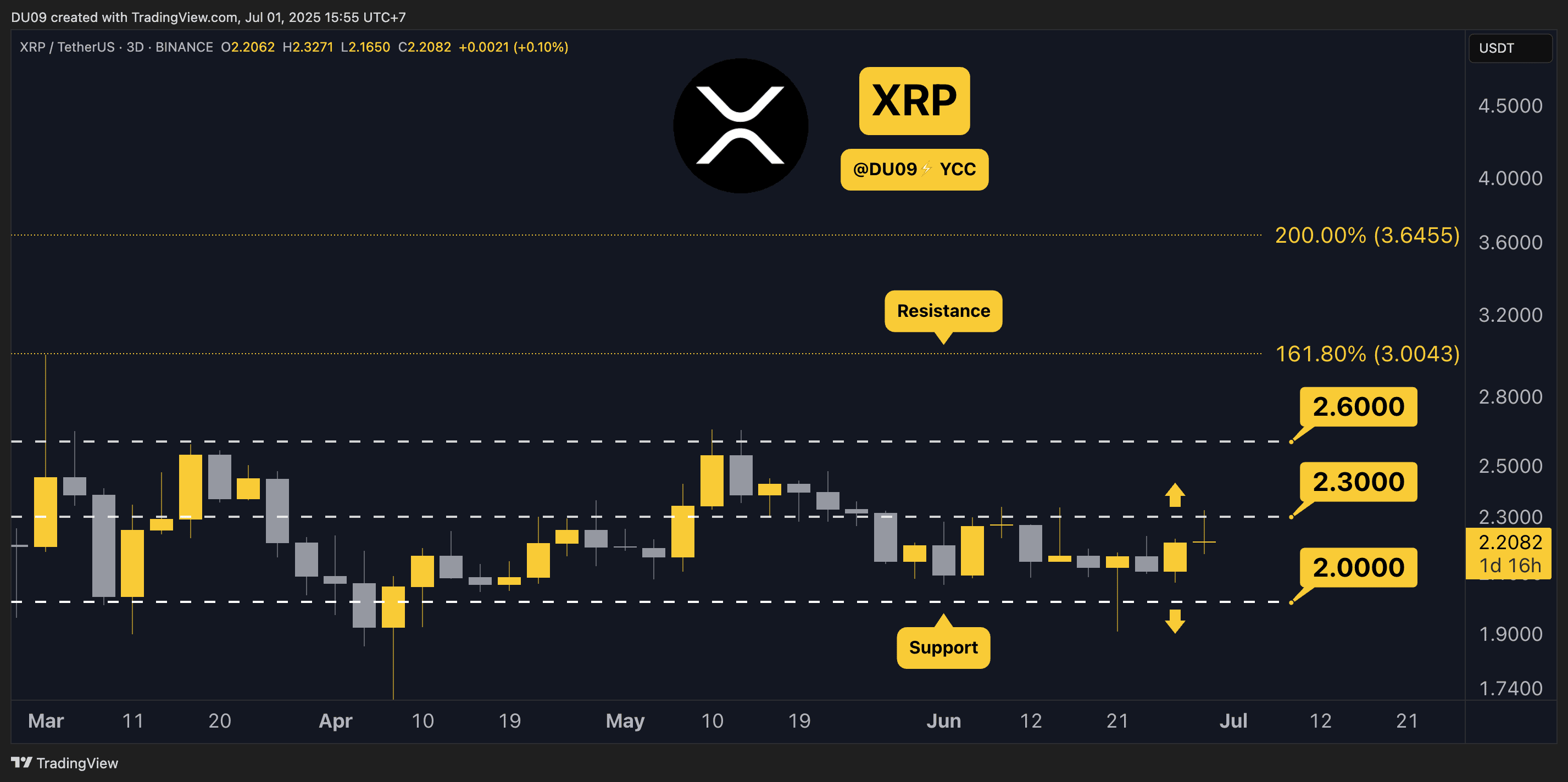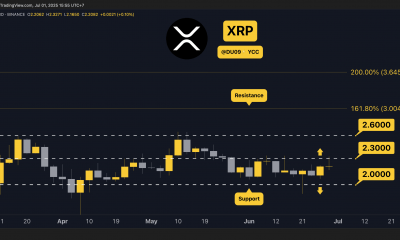Cryptocurrency
‘AI has killed the industry’: EasyTranslate boss on adapting to change

The launch of generative AI products over the past nine months has the world talking about how it will change the future. Many are frightened. Others are excited about the opportunity.
A report last month from Next Move Strategy Consulting predicts the AI industry will grow 20x in the next seven years, creating a $2 trillion business, up from its current value of $100 billion. It might sound like wild hype, but other analysts from McKinsey, Morgan Stanley and BlackRock all map out a similar trajectory. AI is here to stay, and a lot of human lives will be upended. But it’s also the chance of a lifetime.
Frederik Pedersen, the co-founder of Danish AI company EasyTranslate and son of one of Denmark’s most famous men, is approaching the future head-on.
“I have been saying for a long time that translation is dead and AI has killed the industry as we know it, but that hasn’t gone down particularly well with my competitors. Now, however, those same people are listening and are realising that they may be too late if they want to transform their business.”
Son of Danish politician Klaus Riskær Pedersen
It’s not easy to be the child of a powerful person, as has been recently and brilliantly illustrated by the TV series Succession. If there’s a Logan Roy in the family, it’s difficult for the child to be their own person.
Some crash and burn; some, such as singers Justin Bieber and Miley Cyrus, try to shock their parents by being outlandish and independent. It’s rarely a good look.
Others, however, do it in smarter ways and emerge from that parental shadow by adopting different mechanisms to build their own reputation.
In the case of Pederson, now 35, it was technology that enabled him to do so. First, with translation software, and now, generative AI has overtaken it.

His dad, Klaus Riskær Pedersen, is a controversial Danish political party leader, entrepreneur, businessman and author. Everybody in Denmark knows his name.
His chequered career includes being a member of the European Parliament for the Liberal Party, writing books, developing, building and selling around 15 companies over three decades. He set up his own political party in 2018.
But there have been controversies. He has several convictions for fraud and has spent different spells in jail, as well as splitting Danish public opinion and having the social life that goes with such apparent conviviality.
At first, (Frederik) Pedersen suffered. In and out of schools, he tried to find a way of acceptance and struggled. He didn’t make it to university, but he did know about technology and became interested in its power and consequently found a way to plow his own furrow.
“It took me some time to find a direction, but slowly I realized that the world was all about communication. I knew I was from a privileged family, but educators always seemed to have a lack of empathy and communication when I was a child. I was made to feel different, and it was a difficult place to be.
“But I came through it, and those life lessons set me up for all the changes that life throws at you. So I set up a translation company, and now I’m pivoting the company into generative AI because of the huge opportunity it offers humanity, not least the same elements of communication,” says Pedersen.
Early access to OpenAI’s ChatGPT
The AI light started to dawn on him back in 2020.
That year, Pedersen applied to the Danish Innovation Fund for a 65,000 euro grant to create a content generator engine that would enable him to create a new form of translation:
“I realized that the biggest issue in e-commerce when it came to languages was not translation in itself, but creating localized content for retailers’ different products that customers could relate to,” he explains, adding the company spent the money to train “neural networks to create these product descriptions.”
Also read: AI Eye — Real uses for AI in crypto, Google’s GPT-4 rival, AI edge for bad employees
A neural network is a type of machine learning process called deep learning that uses interconnected nodes or neurons in a layered structure that resembles the human brain.
“We branded it content-as-a-service and couldn’t believe we were one of the first companies to do it,” he says, though it ended up proving the old adage that being early is the same as being wrong.
“Ultimately we were ahead of the technology and while our technology could build sentences, it just wasn’t good enough for our customers.”
This first effort was not wasted time and money, however, as it meant the company was able to hit the ground running when large language models were released publicly. EasyTranslate obtained early access to ChatGPT because it already had an account with OpenAI and was able to adopt and execute the technology instantly.
From that point, EasyTranslate pivoted to a generative AI content future based on Pedersen’s thesis that traditional translation was indeed “dead.”
Translation meets technology
It was not the first change in direction for Pedersen’s company. Formed in 2010 without venture capital, the translation service grew quickly.
In 2016, it went after bigger fish and started offering interpretation services to the Danish government after realizing there was an opportunity with the launch of Apple’s FaceTime. According to Pedersen, interpreters were super-expensive, inefficient and slow, and travel for in-person events wasn’t exactly “climate change-friendly.”
Pedersen created a video interpretation app that streamlined costs and increased efficiency by offering a marketplace and matching service for interpreters as well as remote interpreter services.
Danish municipalities signed up for the service, including the Danish Ministry of Justice, recognizing that bringing an interpreter to a court was a very expensive business, especially due to the often last-minute nature of such needs.
Read also
Danish operation a success, but the patient died
At its height, the company was running 1,000 interpretation meetings a day, and between 2017 and 2019, it was responsible for more than 70% of the Danish government’s interpretation business.
However, Pedersen says the Danish government had never outsourced such business, and the relationship turned sour.

“It was a very mutual and fruitful relationship for a long time, but we realized that working with governments was more difficult than we imagined. It was like the cliche of a heavy tanker not being able to turn around.
“Again, it was the first learning curve for me. Yes, our data processing wasn’t as good as it could have been and working with antiquated systems and reasoning was very difficult.
“Eventually, the Danish government decided they didn’t want to carry on with our relationship. It was hard at the time, but I still believe we succeeded, and we learned a lot,” he says.
“Let’s just say, the operation was a success, but the patient died. There was also a lot of opposition from the strong Danish trade unions who thought we were putting people out of jobs.”
“But it was not about putting people out of jobs, it was working with technology in the same way we work with AI now. Our interpreters who decided to join our community were extremely happy with our software. They said it was like having a PA that coordinated their calendar and ensured them productive days with the highest possible earnings — they managed to increase those earnings.”
Impact of AI on jobs
The impact of AI technology on employment is a source of great anxiety for many, with some predicting entire industries will be wiped out, while others suggest jobs will change and evolve rather than disappear.
A recent study by the International Labour Organization found that women will be disproportionately affected by automation, with around 7.8% of jobs held by women in high-income countries (or 21 million) likely to be automated, but only 2.9% of jobs held by men (9 million).
Translation is a highly gendered industry too, with women accounting for around 67% of translators.
Pedersen’s thinking about the essential human element in technology — be that content generation or generative AI — is now central to EasyTranslate’s business.
Also read: AI Eye — Get better results being nice to ChatGPT, AI fake child porn debate, Amazon’s AI reviews
He believes that the combination of humans and AI is more powerful than just letting the AI do everything, using the example of a hard-working high school student who was angry at classmates for using AI to cheat.
Instead of cheating herself, she asked ChapGPT to mark her already-written essay. It sorted out the grammar and typos, and it gave her extra resources and links to improve her work beyond that of the cheater.
“In business, everybody is looking for the magic of balance in the marketplace, that sweet spot where pricing, innovation and technology are aligned. We are also doing that when it comes to AI and humans; we want that magic balance there as well,” he says.
Humans still required in the loop
He cites “humans in the loop” as the way forward for humans and machines. Generative AI can do the heavy lifting, and humans can finish and finesse the job. It creates content in any language generated by AI but enhanced by humans.
“There are others in business, such as Reuters, who also profess the ‘humans in the loop’ phrase. Again, I’ve been saying for a long time that this is the way forward to make both technology and humans better.
“By harnessing the power of both and increasing machine learning in the process, I believe that the current dominance of LLMs will be replaced by small language models that can be tailored exactly for the customer — open source generative AI — that will be the future.”
“That’s what we’re planning for and how the whole AI sector will play out. Those companies that are prepared for that will prosper; those who aren’t will fail,” he says.
Since Pedersen’s pivot to AI at the end of 2022, there has been increased investor interest in EasyTranslate, and the company raised 2.75 million euros earlier this year
“We think that we’ve been ahead of our time, and that thinking has led us to embrace AI and take us to the next level. AI itself is just the mirror of what humanity has already created; AI is really the technological history of human knowledge.
“I think it’s obvious that the two are perfectly compatible, that magic balance, so as generative AI evolves, so will those humans in the loop. Nobody with a good and adaptive brain will lose their job; their jobs and roles will be better and more creative,” he concludes.
His father should be proud.
Subscribe
The most engaging reads in blockchain. Delivered once a
week.

Cryptocurrency
3 Things to Watch in Ripple’s (XRP) Price Today

XRP is testing the resistance at $2.3. Will it break?
Key Support levels: $2
Key Resistance levels: $2.3, $2.6, $3
1. Key Resistance Under Pressure
Yesterday, buyers pushed XRP to the key resistance at $2.3, but sellers returned to stop a breakout. At the time of this post, the price is in a pullback. Nevertheless, this is a positive sign that shows buyers are returning. If this bullish momentum intensifies, then $2.3 could fall and be followed by a test of $2.6 next.
2. Optimism Returns
With the price keen on making higher highs, optimism is returning to this cryptocurrency. This can be seen on the volume profile where buyers have dominated in the last few days. A break above $2.3 will likely see the volume spike and allow further price expansion into new highs.
3. MACD Turning Bullish
After the daily MACD turned positive last week, the 2-day MACD has also turned bullish today. This shows that the buy momentum is slowly creeping into higher timeframes which will build confidence in the price action and attract more buyers. With a positive feedback loop in action, XRP has a good shot at $2.6 or even higher in July.
Binance Free $600 (CryptoPotato Exclusive): Use this link to register a new account and receive $600 exclusive welcome offer on Binance (full details).
LIMITED OFFER for CryptoPotato readers at Bybit: Use this link to register and open a $500 FREE position on any coin!
Cryptocurrency
Bitcoin Traders Wait Important Economic Announcements Today, These Altcoins Plummet (Market Watch)

Bitcoin’s price has retraced by a slight 0.9% in the past 24 hours as traders are expecting a few important economic events during today’s session.
Meanwhile, the broader cryptocurrency market is also reflecting the uncertainty as the majority of altcoins are trading in the red with some charting a lot bigger declines than others.
Bitcoin Price Waits for News
The deep involvement of corporate Bitcoin buyers and institutions has surely played a major role in its price increase over the past year but it’s also the reason why the crypto market has been largely correlated to traditional ones.
A few years ago, literally nobody cared about metrics such as CPI, PMI, and whatnot, but now every crypto trader has them on their watchlist.
As such, today is also shaping up to be a volatile experience with a few important economic events on the calendar.
First, Jerome Powell will speak in the afternoon, followed by data for job openings, PMI, and ISM manufacturing – all indicators that shape policymaking, especially when gauging the strenght of the local economy.
That said, Bitocin’s price is down about 1% on the day and is currently trading at around $106,500 after having tested $109,000 yesterday. It’s interesting to see if the bulls have it in them to push bakc towards the upper boundary of the recent trading range or if the bears will send the price back below $105K.
Altcoins in Red, Some More Than Others
As you can clearly see in the heatmap below, the altcoins are also not having a great day. This is, perhaps, to be expected – Bitcoin’s dominance over the market has been rising gradually over the past many months and whenever BTC slips, altcoins crash.
The past 24 hours have hardly been a crash, though, but it’s clear that most of them are charting more considerable declines.
This is especially true for TKX, ARB, SPX6900, SEI, and others, that are down between 8% and 15% on the day.
Believe it or not, Bitcoin Cash (BCH) is today’s best performer, gaining more than 6%. Who would have thought?
Binance Free $600 (CryptoPotato Exclusive): Use this link to register a new account and receive $600 exclusive welcome offer on Binance (full details).
LIMITED OFFER for CryptoPotato readers at Bybit: Use this link to register and open a $500 FREE position on any coin!
Disclaimer: Information found on CryptoPotato is those of writers quoted. It does not represent the opinions of CryptoPotato on whether to buy, sell, or hold any investments. You are advised to conduct your own research before making any investment decisions. Use provided information at your own risk. See Disclaimer for more information.
Cryptocurrency charts by TradingView.
Cryptocurrency
How Much You Should Invest in Bitcoin (BTC)? Veteran Trader Peter Brandt Weighs in

TL;DR
- The expert advises monthly investments in SPY and BTC for long-term success.
- The leading cryptocurrency is up 6% this week and trades near $108,000. Analysts are split – some see a breakout to $130K – $200K if key resistance levels are cleared, while others warn of a possible drop to $100K or even $95K if momentum fades.
‘Trading is the Wrong Path’
Besides its fundamentals and ability to transform the global financial system, Bitcoin (BTC) has proven to be an excellent investment opportunity.
At least, that was the case in the past few years: the asset went through multiple bear and bull markets to eventually cross the $100,000 mark. Currently, it trades at around $108,000 (according to CoinGecko’s data), representing a 75% increase on a yearly scale and a substantial 43,000% jump compared to its valuation a decade ago.
But does the leading cryptocurrency remain a good investment after this major rally over the years, and how much should people allocate to it? That’s a question many people are trying to figure out.
It seems that there isn’t a direct answer, and it all depends on the risk profile of the investors, as well as other important factors. However, one can turn to certain experts who are experienced enough to give guidance.
An example is the veteran trader Peter Brandt, who recently suggested that approximately 95% of people fail when trading. Instead, he advised them to excel in their regular jobs, prioritize their families, and invest in homeownership. Last but not least, Brandt recommended making monthly investments, allocating 80% of the amount to SPY (the ETF that tracks the S&P 500 Index) and 20% to BTC.
Trading is the wrong path for 95% of ppl
Most would be better off becoming excellent at a day job (engineer, plumber, welder, vet, sales)
Live economically
Get married, have kids
Buy a twin home – rent out one of them
Invest monthly – 80% in $SPY and 20% in Bitcoin— Peter Brandt (@PeterLBrandt) June 29, 2025
The Next Potential Targets
Let’s now take a closer look at BTC’s recent performance and explore its chances for a further pump in the short term. The asset has increased in value by approximately 6% over the past week, with numerous analysts predicting a surge to a new all-time high if certain conditions are met.
The X user Cipher X believes “a strong weekly close” above $107,720 could open the door to a further rally to as high as $130,000-$135,000 in Q3 2025.
“Just look at Q4 2024 chart and you’ll see what happened when BTC had its biggest weekly close,” they added.
Merlijn The Trader thinks the final pump for this bull run is coming, envisioning a fresh ATH of around $200,000 towards the end of the year. At the same time, he advised investors to take profits, anticipating a drastic pullback to $95,000 shortly after that.
On the contrary, Ali Martinez argued that the cryptocurrency currently faces a key rejection while the stochastic RSI flashes a death cross on the daily chart. The analyst thinks a plunge to $100,000 is not out of the question unless “we get a sustained close” above $109,000.
Binance Free $600 (CryptoPotato Exclusive): Use this link to register a new account and receive $600 exclusive welcome offer on Binance (full details).
LIMITED OFFER for CryptoPotato readers at Bybit: Use this link to register and open a $500 FREE position on any coin!

 Forex3 years ago
Forex3 years agoForex Today: the dollar is gaining strength amid gloomy sentiment at the start of the Fed’s week

 Forex3 years ago
Forex3 years agoUnbiased review of Pocket Option broker

 Forex3 years ago
Forex3 years agoDollar to pound sterling exchange rate today: Pound plummeted to its lowest since 1985

 Forex3 years ago
Forex3 years agoHow is the Australian dollar doing today?

 Cryptocurrency3 years ago
Cryptocurrency3 years agoWhat happened in the crypto market – current events today

 World3 years ago
World3 years agoWhy are modern video games an art form?

 Commodities3 years ago
Commodities3 years agoCopper continues to fall in price on expectations of lower demand in China

 Economy3 years ago
Economy3 years agoCrude oil tankers double in price due to EU anti-Russian sanctions


























